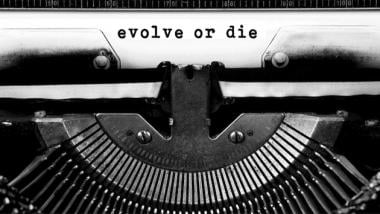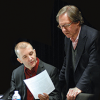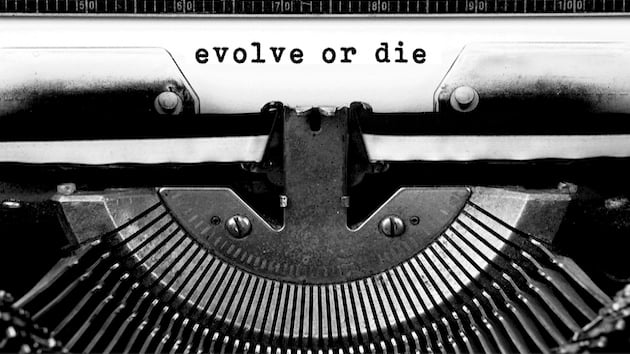
The casualties pile up: In June, 2016, The New York Times cut its ArtsBeat blog, assigning its editor Daniel J. Wakin to the NYT Global division. Last year, the San Jose Mercury News cancelled its classical music coverage and dispatched its critic Richard Scheinin to cover real estate. Last summer, full-time classical music critic Timothy Mangan was given two weeks severance after 18 years at the Orange County Register. In 2015, Scott Cantrell, music critic of the Dallas Morning News accepted a buyout, as did Bret Israel, an arts editor at the Los Angeles Times.
As arts coverage has shifted from major to minor, the diminution of print coverage of classical music events takes its toll. As in Hadyn’s “Farewell” Symphony, the players, snuffing out their candles, slowly exit the stage one by one until two violins play the final pianissimo adagio.
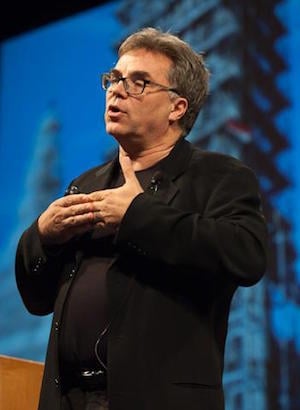
In 2016, reports of newspapers eliminating arts journalists through layoffs and buyouts seem more mind-numbing than shocking. Since the beginning of the millennium, legacy media has shed jobs across the board. In 2007-08, a quarter of all U.S. jobs in arts journalism were eliminated. By 2011, the John S. and James L. Knight Foundation’s then vice president for arts Dennis Scholl estimated that as many as 50 percent of the local arts journalism jobs in America had vanished. In July 2015, The American Society of News Editors reported its first double-digit decline—10.4 percent— in all newsroom jobs since the Great Recession. And anecdotally, the loss of arts journalists, especially critics, outpaces those in other departments. “I can count the number of full-time classical music critics on both hands,” says Douglas McLennan, the editor of ArtsJournal.
But is it all sad news? Or does the changeover to digital media signal the pains of evolution?
THE WHYS
A hailstorm of problems has pounded legacy media over the last 20 years, decimating arts coverage. Print advertising revenue, for starters, has precipitously dropped: As reported by the Pew Research Center, those figures have fallen from $44.9 billion in 2003 to $16.4 billion in 2014, while digital ad revenues, gauged at $3.5 billion in 2014, have nearly remained stagnant since 2006.
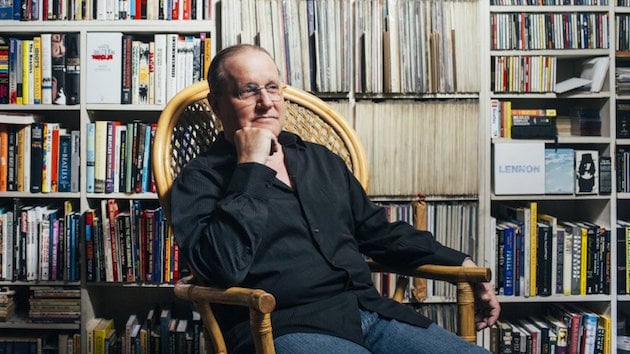
“Generally, newspapers are having a hard time weathering the change from the print world to the online world — not because they can’t find creative ways to present themselves electronically — they can, and do — but because the business model is so skewed that they are having trouble supporting the endeavor, including the large staffs they hired during the heyday of print,” says Allan Kozinn, a full-time music critic for The New York Times from 1991–2012, who accepted a buyout in 2014 and moved to Maine after reporting too many mandatory news stories about Justin Bieber.
Online journalism has entered the wild west when it comes to monetization. Traditional broadsheets are forced to compete for clicks with The Daily Beast, Huffington Post, Salon, Slate, and BuzzFeed and with the distillation of newsbites on social media such as Facebook and Twitter. “There used to be a media that was top-down, but that has changed rapidly for the news industry,” says Michael Zwiebach, the senior editor of San Francisco Classical Voice since 2009. “People are not addicted to, nor do they trust, one source of information. For a lot of sources like the San Francisco Chronicle and Boston Globe, there has been a free-for-all competition for eyeballs. They take stories they think will bring in the most hits,” which in the culture category is most likely television, movies, pop music, or an occasional blockbuster like Hamilton.
And culture that isn’t easily monetized gets ignored. “At one time when there were classical recordings, there was a revenue and economic stream for classical music and the opera world that perpetuated media to cover them because it was also a business and industry,” says Peter B. Carzasty, the founder of the arts consulting firm Geah, Ltd. The survival struggle of media institutions was only exacerbated by the Great Recession of 2008–09.
Increasingly shortened attention spans have driven the hunger for quick internet news. The 1982 launch of USA Today, specifically designed for a generation raised on television and whose motto was, “an economy of words, a wealth of information,” predated internet trollers who can’t wade through anything over 140 characters, much less a 1000-word review.
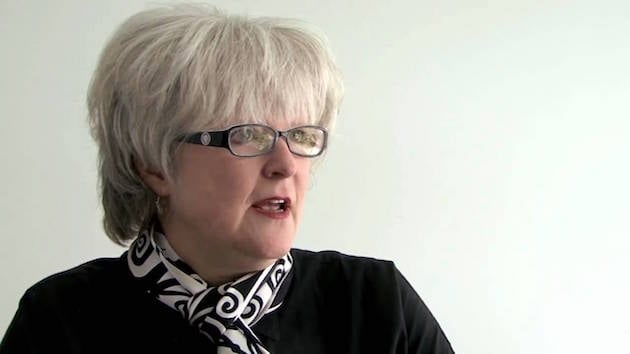
For millennials, the idea of a shared economy drives the notion that anything read online should be free. “When young people feel that, you’re less likely to pay for things — and less likely to get paid for it,” says Johanna Keller, who founded the Goldring Arts Journalism master’s program at the S.I. Newhouse School of Public Communications at Syracuse University. Related to that concept is a strong sense of citizen journalism, where the public, rather than a consortium of perceived-as-elite journalists and critics, collects, reports, analyzes, and distributes information.
Starting in the 1960s, American culture’s center-of-gravity shift moved away from classical music to pop and rock music — until today when classical music is so marginalized that Gustavo Dudamel or Anna Netrebko will never grace the cover of Entertainment Weekly. A related obstacle, says Keller, is “the large systemic problem in classical music — sometimes just perceived and sometimes true — of a lack of diversity, both culturally and racially.” Add in prolific cuts in arts education, and the interest in classical music erodes further.
Zwiebach points to festivals, such as San Francisco’s Switchboard Music Festival and Bang on a Can in New York, where music genres are discarded — something classical music organizations could learn from. “If you think classical is [categorically] different from rock or jazz, you’re thinking like a record executive or a brick-and-mortar store,” he says. “Musicians don't think that way. They’ve never thought that way.”
Many classical music organizations have also missed out on savvy marketing opportunities that the visual arts and some museums have discovered when meeting the curveball challenges of a diverse, democratic society. “[The organizations] create the content, the narrative and the story and they have to creatively deliver in that manner without jeopardizing the integrity of what they’re doing,” says Carzasty. “That’s a challenge that a lot of nonprofits in the arts world are still trying to figure out.”
THE FALLOUT
Among the casualties of fading arts journalism are reviews, which, when sacrifices in inches are made, are too often eschewed for more popular content. Some editors, who regard reviews as spent forces, choose to replace them with short puff pieces, pictures, or videos with the intention of reinventing what they see as an outdated model.
In her arts journalism classes, Keller stresses how independent critics bridge the audience and the artist, enlightening readers about artists who fail to connect with the material or the audience or, conversely, produce something first-rate. “Making an argument about that is really a way of both assessing a work of art and assessing art in our times,” she says. “The way [author] J. M. Coetzee expresses it is that criticism creates the classics. It’s the way we define the work that continues to speak to us, and over time the classics change because our society changes.”
Reviews also stir robust discussions around music, the way sports coverage does.
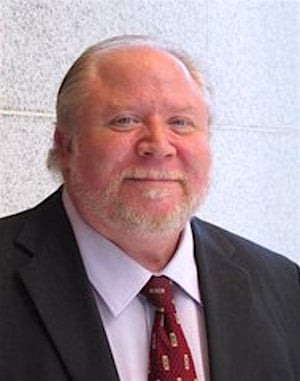
As online media explodes, it’s easier to access stellar arts writing globally. “The problem is: what about the local arts?” asks Eric Newton, consultant to the Knight Foundation and innovation chief at Arizona State University’s Walter Cronkite School of Journalism and Mass Communication. “The phenomenon we are talking about is being able to access the greatest arts journalists in the world, but not knowing where you should go to see the local symphony. That’s the information paradox of the digital age, which occurred because the economics of our media system is rooted in localities.” A high-profile journalist may generate a wide following of support and an income base. “But when it comes down to the local, independent arts journalists, the numbers are not the same,” he adds. “In the long run, that’s problematic for the arts.”
At San Francisco Classical Voice and similar organizations, like Oregon Arts Watch, small, local organizations are the reason that reviews continue to have such a high priority.
Another casualty of the loss of staff reporters with assigned beats is the evaporation of local reporting on finances and the health of performing arts organizations. “It means that all sorts of important things happen without any notice, and organizations that get in trouble don't get reported,” says McLennan. “501(c)(3)s are public trusts, and the press should be one oversight. Right now, it's mostly not.”
When arts journalists disappear, it’s significant to ask who will train the next generation of writers. “Normally you would expect Allan Kozinn to say, ‘Hey kid, here’s how you write about this beat,” says Zwiebach. “But there’s no continuity, and it’s hard to imagine how you get it back. I worry about a critical mass of loss.”
SOME SOLUTIONS
Letting the handwringing go for a minute, there are some hopeful signs and encouraging ideas on the subject.
A recent Knight Commission on the Information Needs of Communities in a Democracy addressed the subject of the future of journalism by first stating that journalism doesn’t need to be saved; it needs to be reinvented. “We can’t go back, we have to go forward,” says Newton. “The answer is there’s not a single future anymore,” a concept, especially for baby boomers who have always leaned on traditional media, that’s tough to grasp. “The pieces are everywhere and quite frankly nobody knows how the pieces are going to recombine.” What works in one community might not work in another.
In June of 2016, Keller moderated a panel at the Music Critics Association of North America meeting in Charleston, South Carolina titled, “Music Criticism Today: Challenges, Opportunities, & Survival Strategies.” The most popular models for the future of arts journalism include nonprofit websites, such as SFCV, which has spawned other local sites, such as Performing Arts New England and Classical Voice North Carolina.
“The nonprofit model is really important and, I think, is going to be key,” says Keller.“Places like ProPublica and Politico have done that with investigative reporting, which is another very expensive, out-of-fashion form of journalism.” SFCV, founded in 1998 by Robert Commanday, was originally funded solely by philanthropist Gordon Getty, but has since sought support through grants, donations from readers, and its board of directors. It also generates revenue from member organizations who can essentially advertise on the site. Among its scores of paid writers are noted arts journalists who have been laid off from legacy media jobs or taken buyouts. SFCV has also created a six-month mentoring program for young writers and musicians to hone their skills in musical criticism. The journal partnered with the Stephen and Cynthia Rubin Institute for Music Criticism, which brings young writers to the San Francisco Conservatory for a week to practice review-writing under the guidance of famous critics like Anne Midgette and Alex Ross.
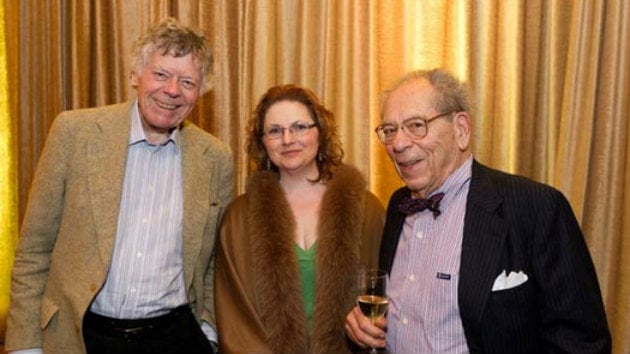
More edgy models include Brooklyn Rail, an independent forum for arts and politics in New York; and Hyperallergic, which welcomes witty and radical perspectives on art. ArtsJournal is a digest that compiles arts writing from around the globe and also features blogs by over 60 arts and culture journalists.
The nonprofit MinnPost, which serves Minnesota, especially the Twin Cities, has provided robust local news and arts coverage since 2007. Pamela Espeland writes the site’s Artscape column, which covers a full range of performing and visual arts through features and reviews and receives around 48,000 page views per month. “I wanted to focus on classical, jazz and new music—things that are not likely to be covered,” says Espeland. The only downside to the job is that it’s not a full-time position.
“We may have gone through a golden age of staff jobs with benefits,” says Keller. “For many classical music critics in the future, it’s going to be a second job — more avocational than vocational.”
A tool likely to proliferate lies at the junction of citizen journalism and blogging. Arts blogging can consist of blather that aims for notoriety by being outrageous; or it can be profound. “There are some extraordinary blogs out there, written by people who are well-informed and good writers,” says Kozinn. “If you don’t know what you’re talking about, that quickly becomes apparent, whether you’re at a newspaper or writing a blog. And I may be naive, but I like to think that whether you get a following, as a blogger or as a print critic, is directly proportional to your ability to make an informed, persuasive argument.”
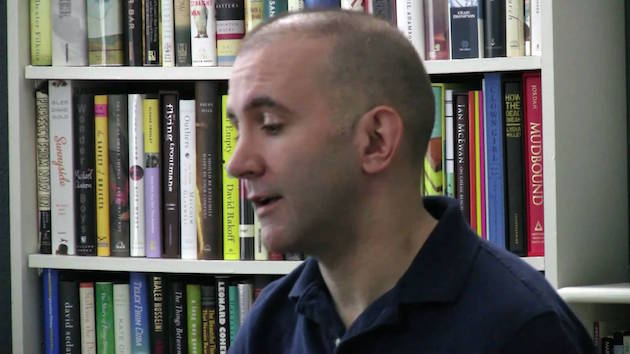
Alex Ross, the New Yorker’s music critic, started his exceptional blog The Rest is Noise to help classical music elbow its way into the internet the way rock criticism and its chat rooms have done. Musicians such as Emanuel Ax, Jeremy Denk, and Hilary Hahn write blogs, carrying on a tradition of musician/journalists that trails back to Berlioz and Schumann.
In 2011, the Knight/NEA Community Arts Journalism Challenge awarded substantial grants to five finalists out of 233 applicants to experiment with new ideas in arts journalism. The five communities were Detroit, Miami, Philadelphia, Charlotte, and San Jose, and the ideas ran the gamut. iCritic Detroit, for example, utilized a mobile video booth where audience members had access to cultural events and then recorded their reviews that were posted on local websites and social media. In San Jose, a three-part project called Silicon Valley Arts Technica, led by The Bay Citizen, featured mapping technology to highlight arts events; a mobile app that allowed people to add reviews and images; and investigative reports analyzing the disparity in arts funding between Silicon Valley and San Francisco. In Philadelphia, Drexel University, along with students, faculty and affiliated journalists, collaborated with the Philadelphia Daily News to expand its arts coverage through a program called Art Attack.
“This impressed the NEA people,” says Newton. “After we did it for a couple of years, they said, ‘We like what we've seen. We don't see why we shouldn't allow arts journalists to apply for NEA arts grants.’”
Academic institutions, as shown by Drexel University, can also cultivate arts journalism in their communities. Newton is a proponent of the “teaching hospital” model, where students provide professional journalism, while working closely with professional journalists. “It’s the way medical students do medicine and law students do law,” he says. “In that learning model, it’s easier to teach complicated concepts like ethics and critical thinking and to apply Socratic classroom concepts to the actual production of journalism in a mutual environment.”
Profitable corporations like Walmart and Nike have implemented alternative marketing methods via their own newsrooms with embedded journalists who tell stories to generate interest in their brands. “Nike has journalists writing about the latest studies of runners’ injuries, for example, anything having to do with your personal training, and other things that Nike cares about,” says McLennan.
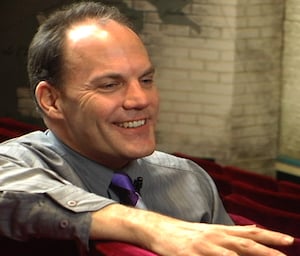
In 2013, The Denver Center for the Performing Arts hired former Denver Post theater critic John Moore for its newly created position of associate director of content strategy. A self-described “media outlet of one” (although local freelance writers are also now contributing), Moore, a multimedia journalist (“I’m a writer with a video cam, a podcast, and social media,” he says), churns out numerous news stories, but not reviews, about the center and other local cultural events at the DCPA’s online “Newscenter.” Over 21 months of tracking, the organization’s analytics center credited the Newscenter with generating $379,000 in direct ticket sales. The Newscenter racks up 45,000 hits per month, and Moore says his salary exceeds his former pay in the newspaper business.

In reaction to reduced arts coverage, the Baltimore Symphony created a full-time position of staff writer in 2014 to generate stories — but again, no reviews — for its website that are then distributed through social media. Ricky O’Bannon, the writer, estimates that about 30 percent of his story content relates directly to the Baltimore Symphony Orchestra. O’Bannon has done several FiveThirtyEight-style stories by researching data from all the compositions played by American orchestras within a year. The aim was to determine trending repertoire by composer, nationality, gender, and other categories. “I wanted to expand the conversation around questions like, ‘Are we performing enough music by living composers or women composers? Or have we neglected American composers of a certain era?’” he says. Nevertheless, he acknowledges that his writing lies in “a gray area” between public relations and journalism.
Creating an editorial firewall for in-house media is awkward at best. “[Embedded journalists] don't have the freedom to stand outside and take a critical, utterly independent stance,” says Keller. “It’s called PR. It can be done very well, be very intelligent, and can be great for audiences. But it’s not journalism. There’s no way a large arts organization is going to fund someone who wants to criticize their work. They're just trying to get butts in seats.”
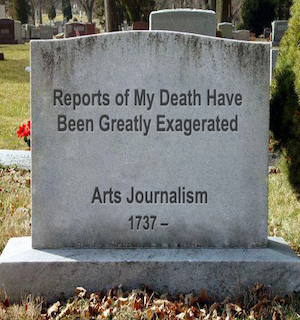
So, will classical music journalism survive its own transfigured night? McLennan compares the situation to Chinese dynasties, where warring states would compete to grab power at the end of an era, with the winner ushering in the next dynasty: “We’re in that period where it’s not obvious yet what’s going to win out as the best way of doing all this. But I have no fears at all that it’s simply going to vanish. It’s not a zero-sum game. It’s an evolution. And evolution is painful sometimes.”
Keller warns that “counting tombstones” is pointless because traditional newspaper jobs are never coming back. “The change is enormous,” she says. “There’s a lot of knee-jerk thinking about this topic, but it’s a lot more complicated than people think. Otherwise we’re missing the story and not understanding that change is not death, even though it looks like it.”
Corrections: The article as originally published mistakenly identified South African author J. M. Coetzee as Jonathan Coetzee. We have also clarified that the Music Critics Association of North America meeting referenced above was in June of 2016.

